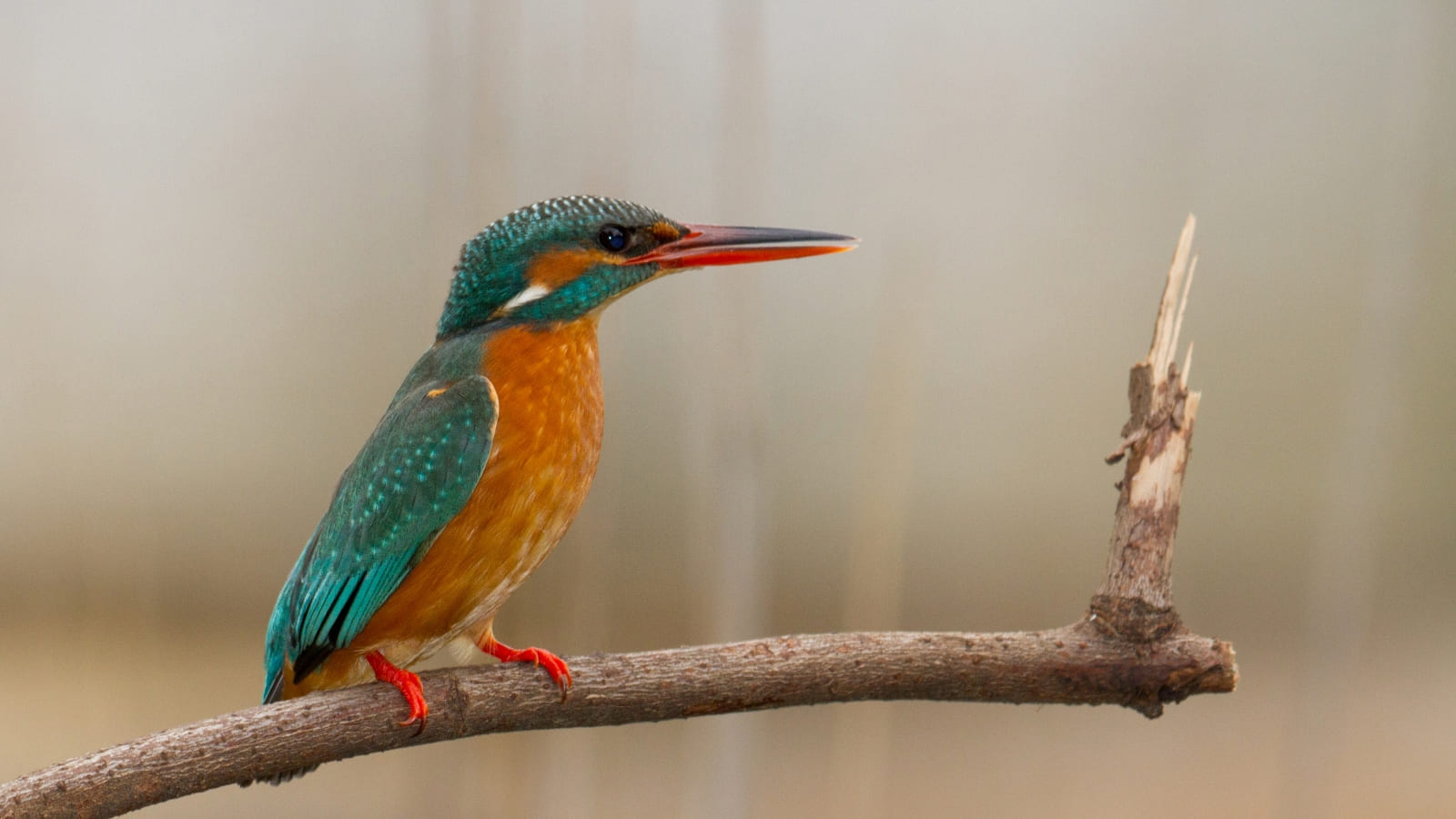A visit in search of five water birds in the Gulbenkian Garden
Gardens for wildlife
Several species of water birds spend their days around the large lake in the Gulbenkian Garden. This ‘structuring element of the garden,’ as João Eduardo Rabaça calls it, which joins up other water points and streams in this 7.5-hectare green space, allows us to observe ‘some species of birds we do not find elsewhere in Lisbon so regularly.’
The fact that people increasingly live in urban areas (around 56 per cent of the world’s population today) has led to an ever greater disconnect with nature, laments this professor from Évora. However, he clarifies, ‘even in the city, it is possible to maintain that connection and have an idea of what is happening in the natural world.’ In that regard, João Eduardo Rabaça suggests we follow the rhythm of the seasons in a green space like the Gulbenkian Garden, making regular visits to identify the changes in the landscape and the various species of animals, plants and mushrooms that appear and disappear as the days go by.
And when better to start than now? With the help of João Eduardo Rabaça’s explanations given during an organised visit to this garden in June, take the opportunity throughout the year to look for the water birds of the group he calls ‘the magnificent five,’ in an allusion to the animals most sought after on African safaris.
Egyptian goose (Alopochen aegyptiaca)
Despite their name and size, these birds of African origin are not considered true geese and are actually closer to ducks in taxonomic terms. Introduced to Europe in the 17th century for ornamental purposes, the Egyptian Goose was first recorded in Portugal in 2002. Since then, the presence of this bird in Lisbon and other cities around the country has been increasing, and today it is legally classified as an invasive species. These are ‘very territorial’ birds, with ‘breeding pairs that expel their young at an early age,’ explains João Eduardo Rabaça.
Around a decade ago, several years before they gained status as invasive species, a breeding pair were introduced in the Gulbenkian Garden with the aim of helping contain the large increase in mallards, without much success. In summer, a few Egyptian geese can be seen wandering around this green space, but there are still many more mallards waddling around in the lakes and streams and on the lawns.
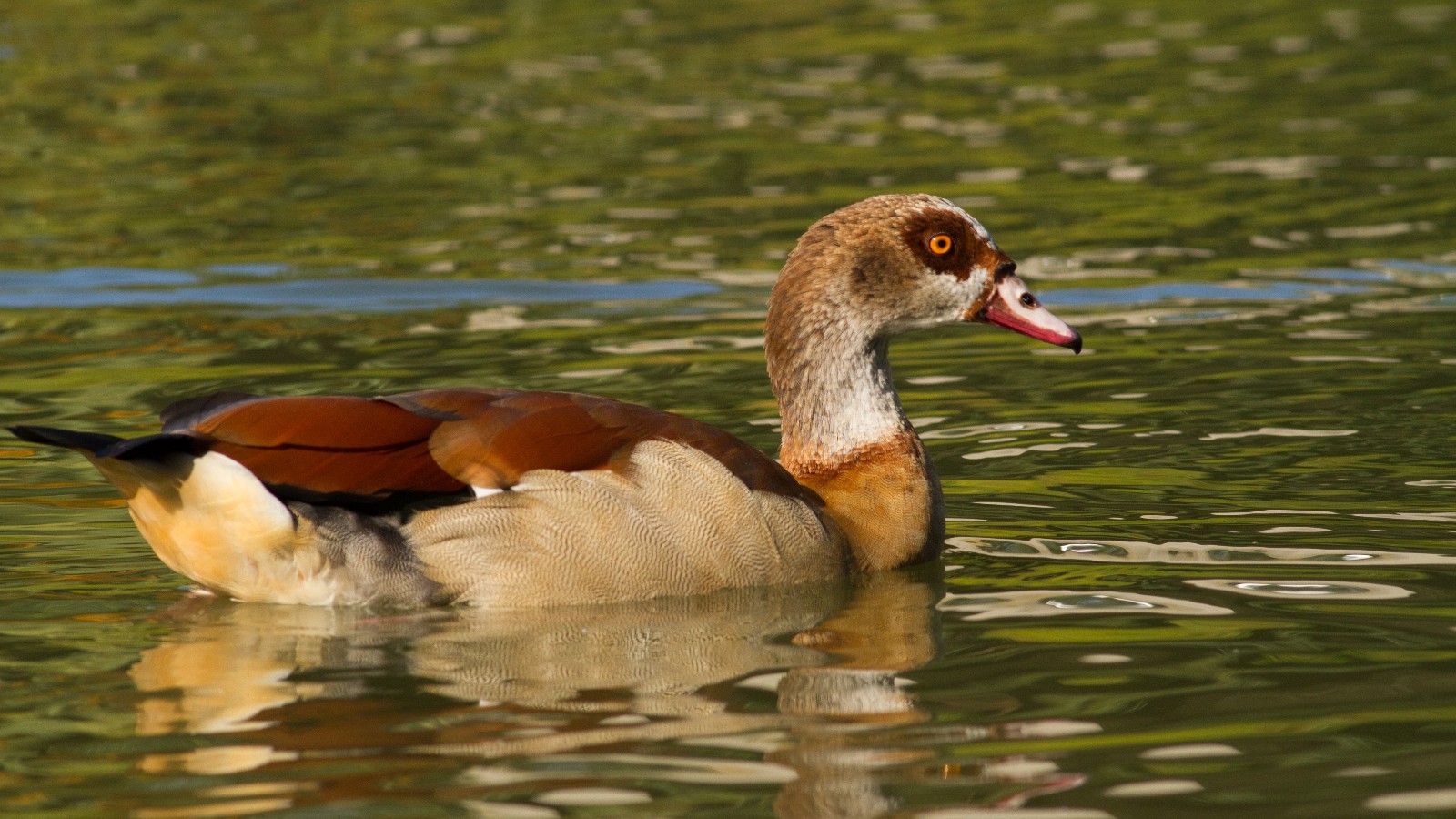
Mallard duck (Anas platyrhynchos)
The mallard is the most common duck in Portugal and a certain presence in many gardens, provided they have a small pond. But why are there so many of these birds in the Gulbenkian Garden? First of all, says our professor from the University of Évora, because ‘there are no predators’ in this urban green space, but also because ‘they got used to being fed’ by visitors. ‘The natural food that exists here is enough for a balanced ecosystem,’ notes João Eduardo Rabaça, who warns that processed food such as biscuits and bread are ‘unhealthy’ for these birds. Ducks should instead feed on ‘aquatic vegetation, small molluscs and crustaceans and insects.’ If the opposite happens, with ‘supplementary food’ provided by the public, there tends to be ‘too many ducks.’ And this has consequences for the garden itself, as happened a few years ago: ‘As soon as new plots of grass were sown the ducks would immediately eat it all,’ leaving everything ‘in a bad state.’ Things have improved since then, and many visitors to the garden are now better informed, thanks to the information provided on small illustrated posters placed at various points in the garden.
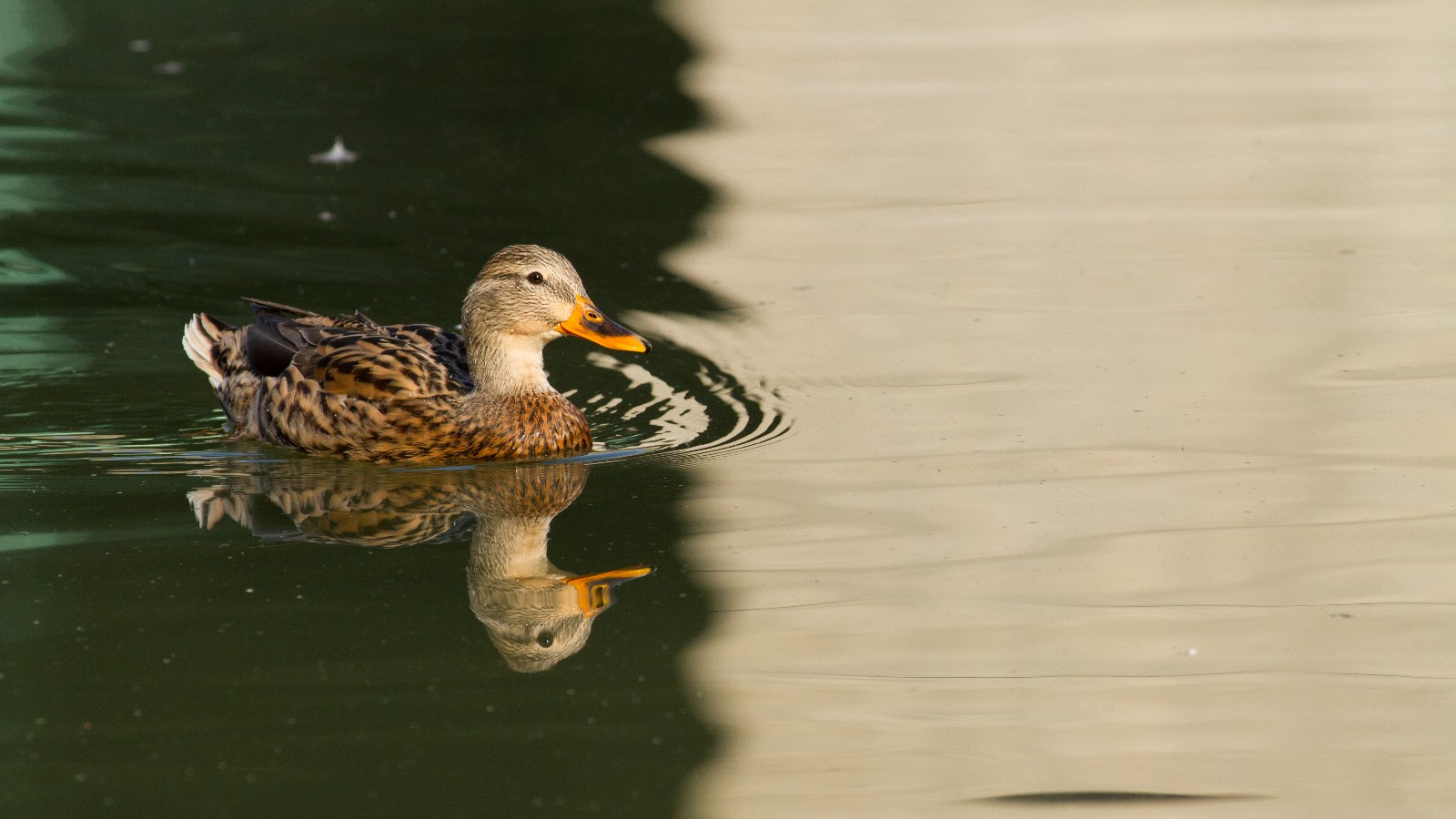
Common moorhen (Gallinula chloropus)
The tiny chicks of the common moorhen cannot always be spotted in the Gulbenkian Garden, as there are several dangers lurking there, from cats to seagulls, but when they are around, it is impossible not to notice them. These restless little birds, always chirping, wander around the lake while sticking close to their mother, lest another more daring animal catch them for lunch. As for the adult birds, they’re easily recognised by anyone paying attention: just look at their tapered red and yellow beaks, which contrast with their black feathers and greenish feet, which end in long, spaced toes with no webbing, quite different from the feet of geese and ducks. The moorhens usually make their crude bowl-shaped nest with twigs, well hidden from possible predators in the vegetation.
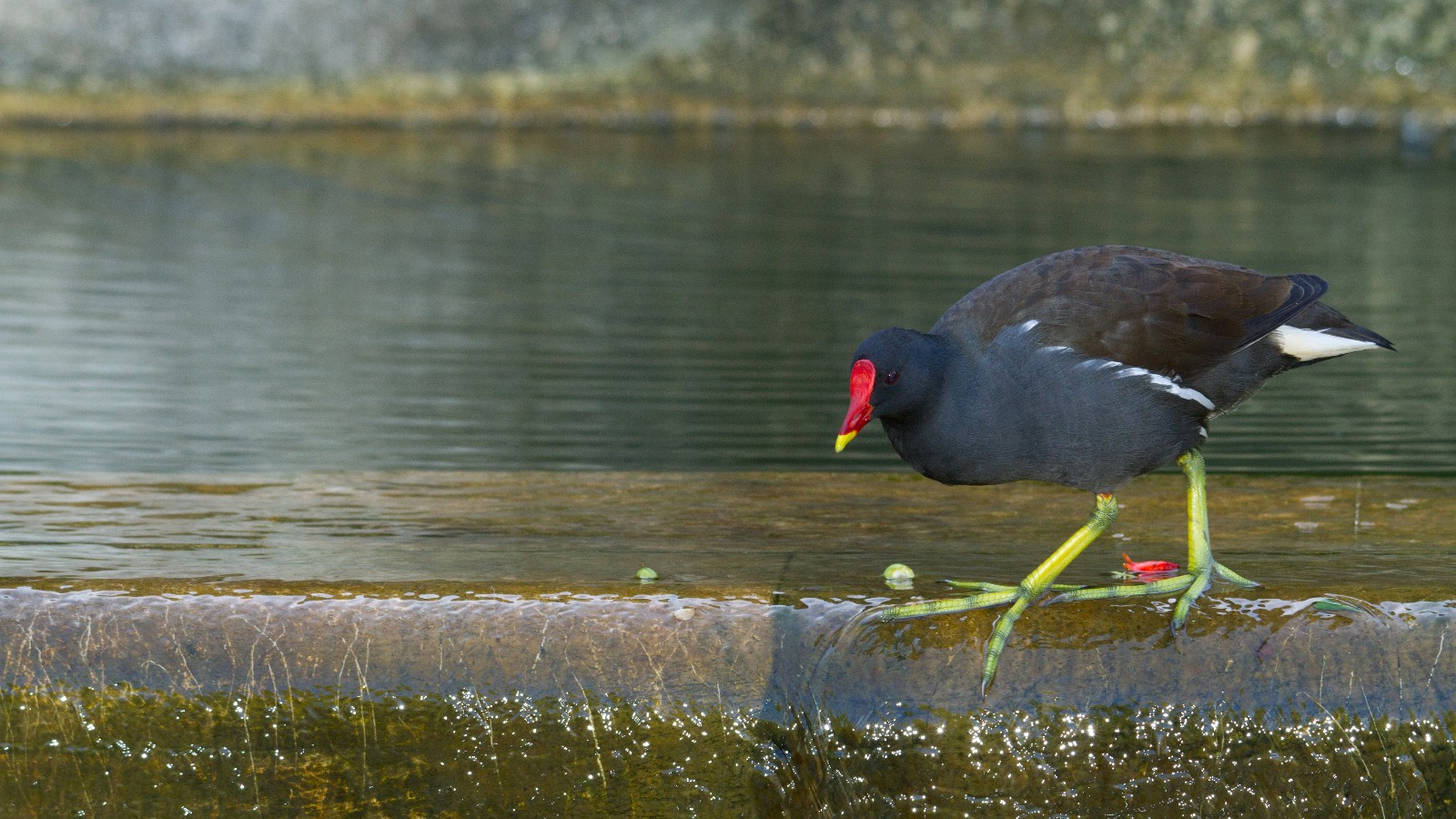
Kingfisher (Alcedo atthis)
Some luck is needed to spot a kingfisher, almost always fleetingly while it’s on the move. When observed in motion, this small water bird resembles a blue arrow, such is the speed with which it flies to hunt its prey in lakes and rivers. Kingfishers in the Gulbenkian Garden feed on small fish and molluscs, remaining motionless and practically invisible at the top of reeds while on the prowl, explains João Eduardo Rabaça. They ‘deal very well with polarised light,’ which allows them to accurately locate fish and other small animals in the water. These birds are occasional visitors in the Gulbenkian Garden and can also be seen nearby in the Eduardo VII Park and in its Green House.
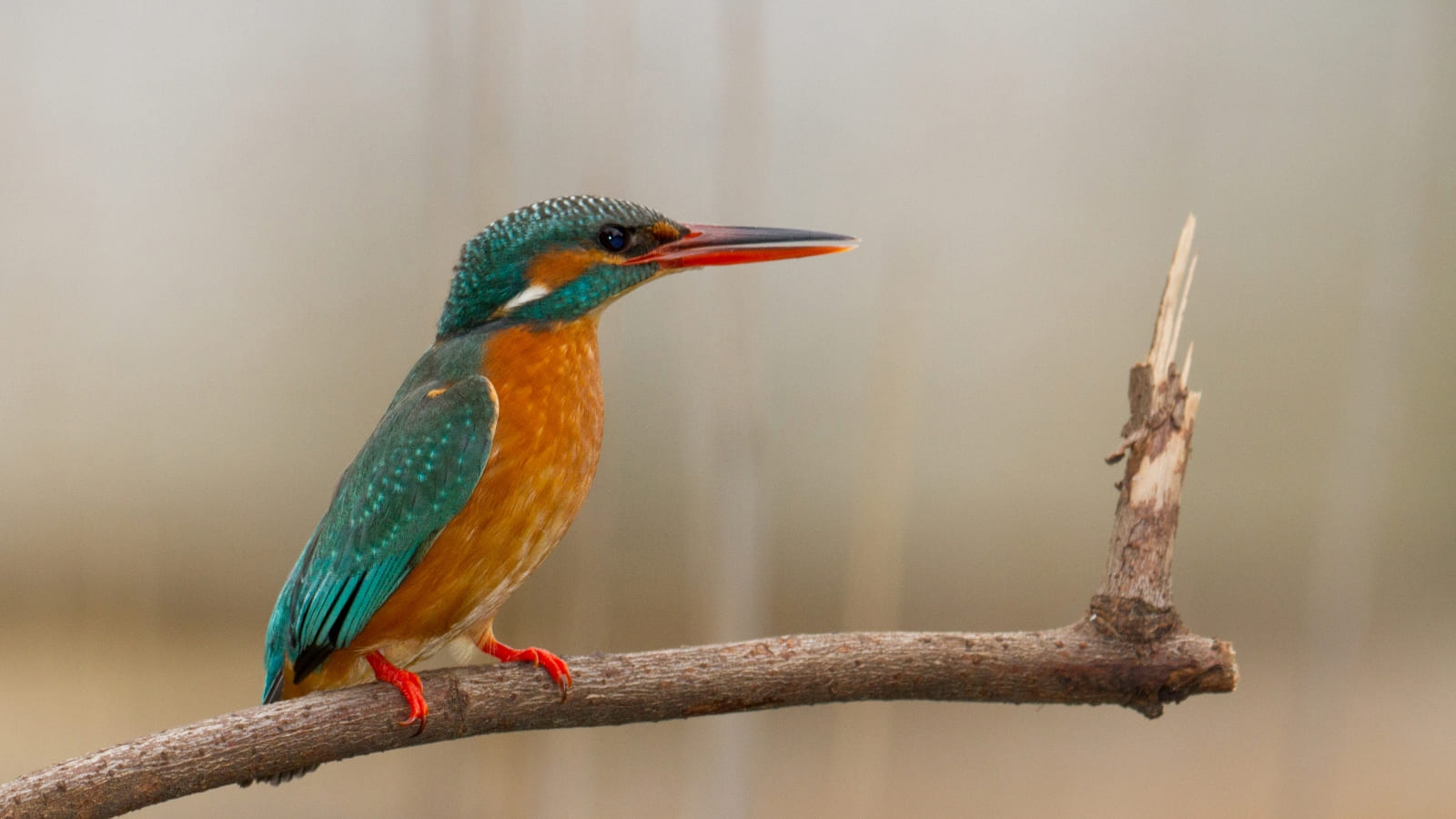
Black-crowned night heron (Nycticorax nycticorax)
These herons are able to remain completely still for long periods, going completely unnoticed by those passing by as they patiently wait for an unsuspecting fish, frog or crustacean to approach the water’s surface. In his book As Aves do Jardim Gulbenkian [Birds of the Gulbenkian Garden, 2016], João Eduardo Rabaça explains that they can be seen regularly in this green space in Lisbon, especially from May to October. It is during the breeding season that it is easier to spot them during the day. The night herons that can be seen both here and in Jardim da Estrela originate from the small group of these birds that nest freely in the Zoo in Sete Rios.
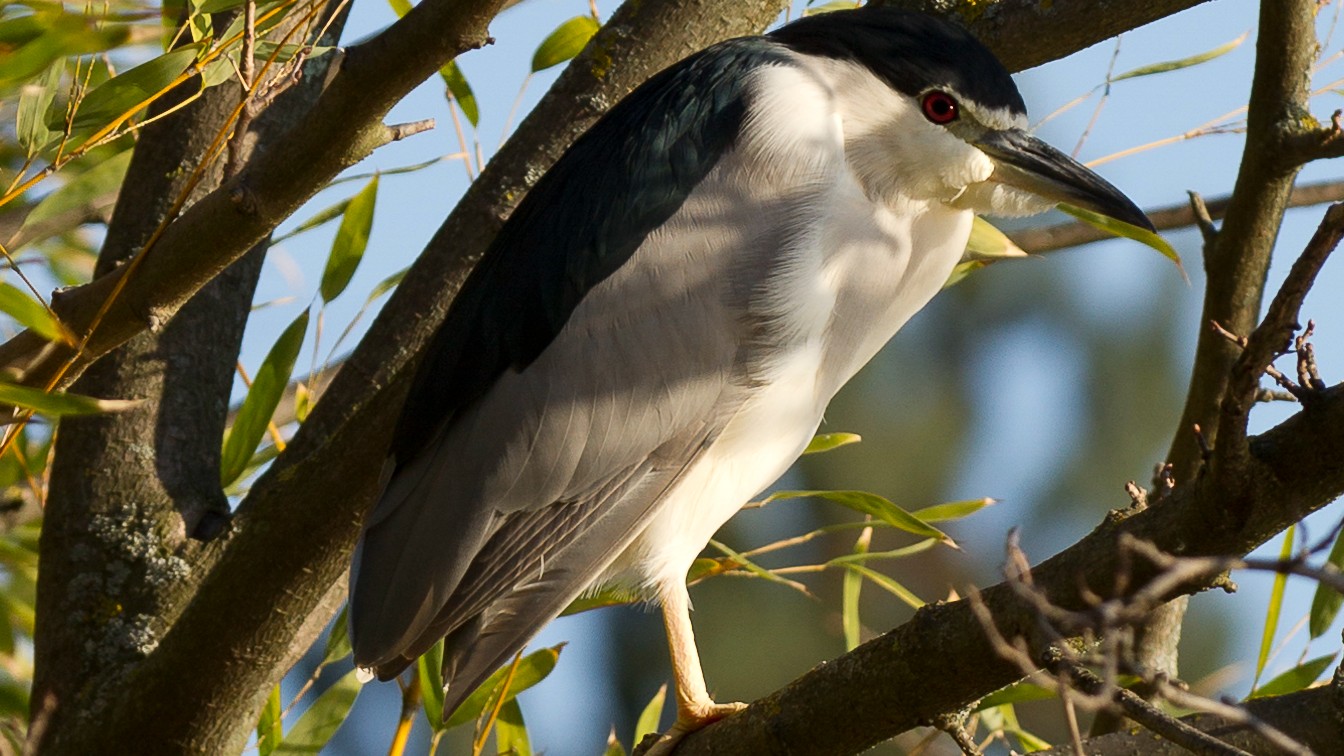
Gardens for wildlife
Throughout the year, the Gulbenkian Garden is promoting a series of visits focused on how to make our gardens, parks and land, both inside and outside cities, more welcoming for wildlife – fundamental for life on Earth! Wilder magazine follows these visits and publishes articles on each of the different topis covered in partnership with the Gulbenkian Foundation.
